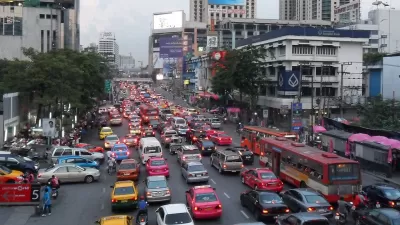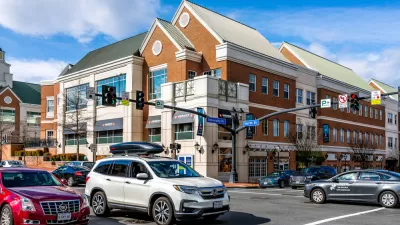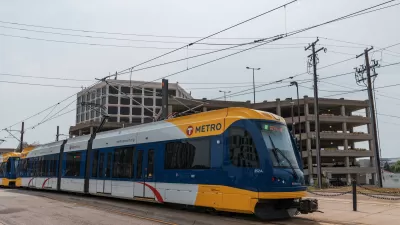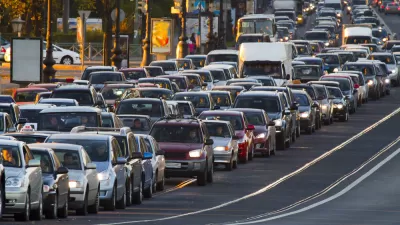Determining whether to widen a street solely based on rush hour traffic ignores how the street is used and who uses it the rest of the day.

Writing in Streets.mn, Bill Lindeke challenges current practices in planning that place too much emphasis on Level of Service (LOS) and rush hour traffic in determining how we build out our roads. Using examples from Saint Paul, Lindeke notes that the increase in vehicle movement through intersection is great for the few hours of rush hour traffic, and barely noticeable at all other times of the day. And that newly widened road really isn’t doing any favors for moving pedestrians around.
If you combine the two “peak hours” (giving them 2-hour time slots), you end up with 4 hours of the 24-hour day. That leaves 20-hours of the day that are “off peak”, times when the road will be “overbuilt” for the amount of traffic that it has.
Basically, transportation planners are always faced with a choice here: Do you give design priority to the people using the street for those 4 hours of the day at the expense of the people that “use” the street for the other 20 hours?
Lindeke suggests a move toward using a multi-modal LOS "that balanced LOS for cars against LOS for other modes of mobility" (i.e., pedestrians, cars, bicycles, buses). Another option would be to simply expand the hours by which we measure LOS to get a better understanding of how the roadway is used throughout the day, and planning for all users, rather than just the few that clog the intersections during rush hour.
FULL STORY: The Injustice of Peak Hour Myopia

Planetizen Federal Action Tracker
A weekly monitor of how Trump’s orders and actions are impacting planners and planning in America.

San Francisco's School District Spent $105M To Build Affordable Housing for Teachers — And That's Just the Beginning
SFUSD joins a growing list of school districts using their land holdings to address housing affordability challenges faced by their own employees.

The Tiny, Adorable $7,000 Car Turning Japan Onto EVs
The single seat Mibot charges from a regular plug as quickly as an iPad, and is about half the price of an average EV.

Seattle's Plan for Adopting Driverless Cars
Equity, safety, accessibility and affordability are front of mind as the city prepares for robotaxis and other autonomous vehicles.

As Trump Phases Out FEMA, Is It Time to Flee the Floodplains?
With less federal funding available for disaster relief efforts, the need to relocate at-risk communities is more urgent than ever.

With Protected Lanes, 460% More People Commute by Bike
For those needing more ammo, more data proving what we already knew is here.
Urban Design for Planners 1: Software Tools
This six-course series explores essential urban design concepts using open source software and equips planners with the tools they need to participate fully in the urban design process.
Planning for Universal Design
Learn the tools for implementing Universal Design in planning regulations.
Smith Gee Studio
City of Charlotte
City of Camden Redevelopment Agency
City of Astoria
Transportation Research & Education Center (TREC) at Portland State University
US High Speed Rail Association
City of Camden Redevelopment Agency
Municipality of Princeton (NJ)





























